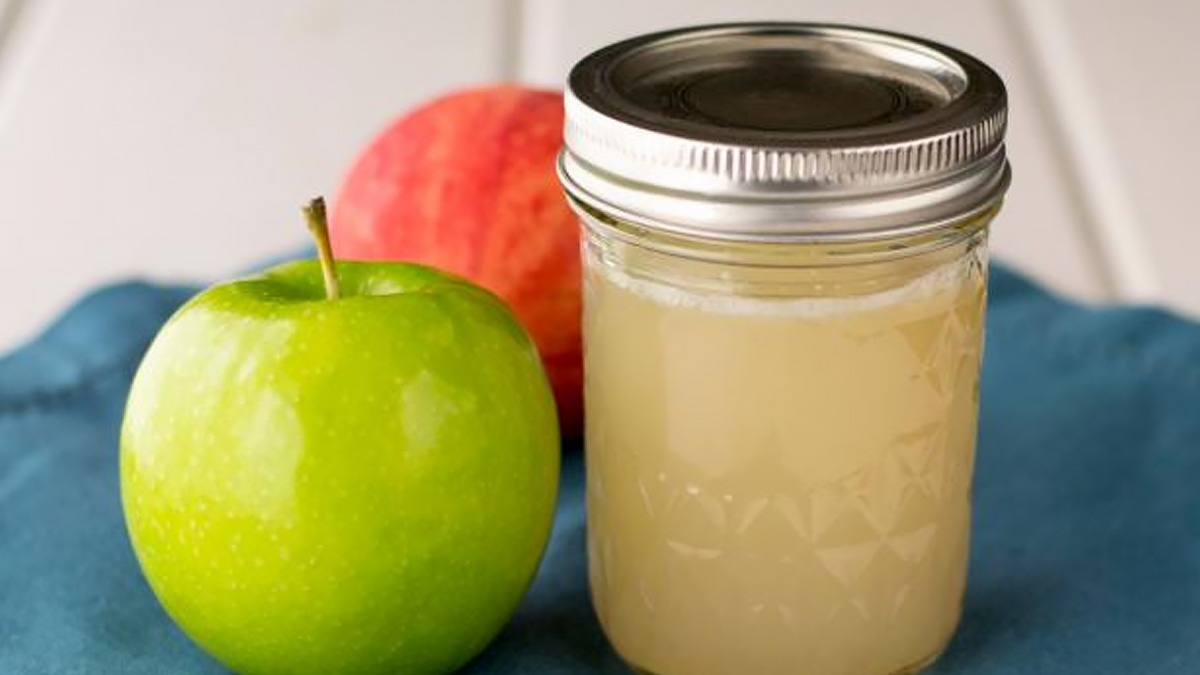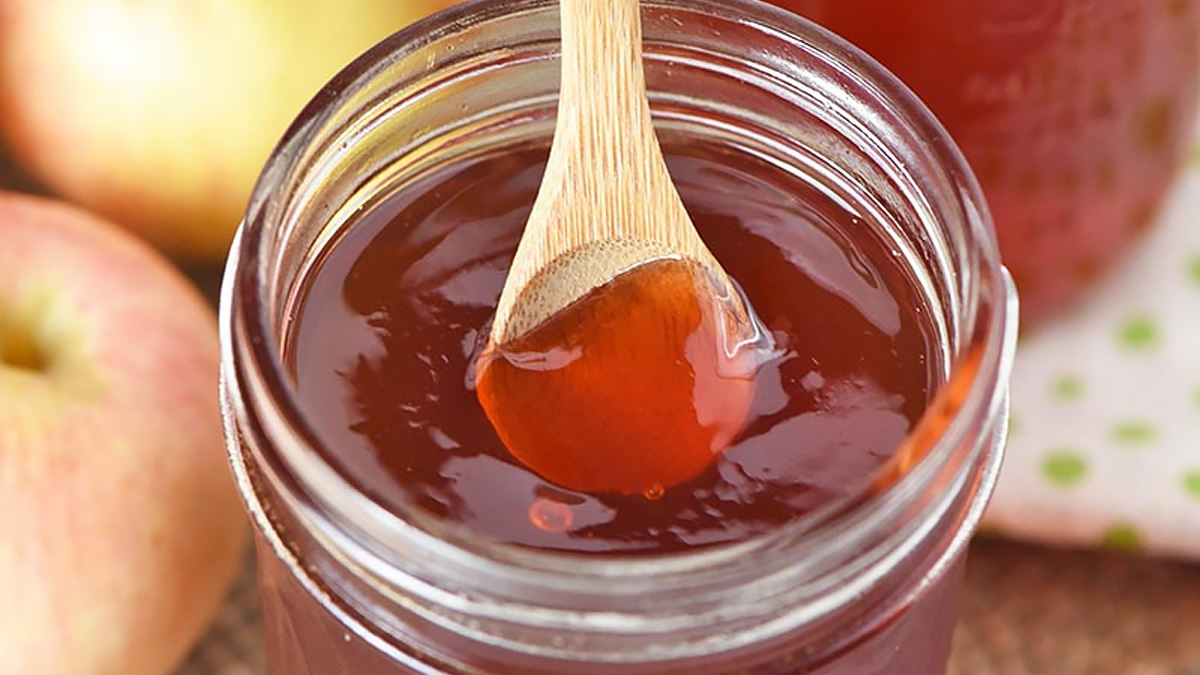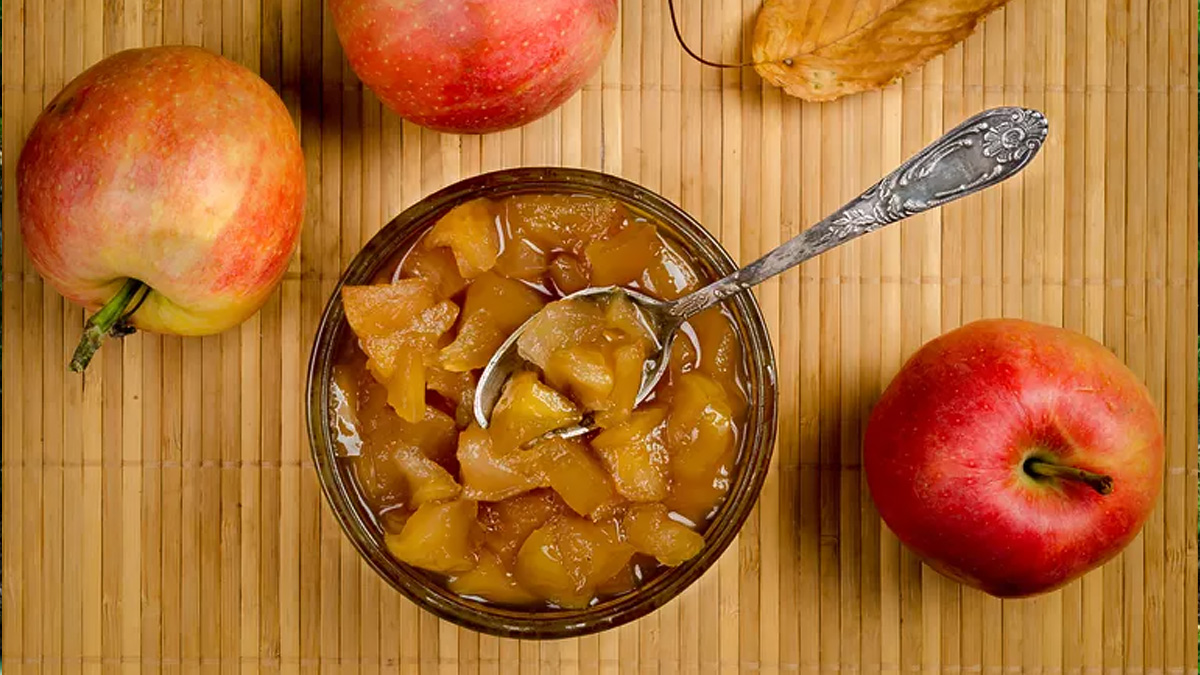on
Pectin is best known as a jam and jelly-making ingredient, although there are a number of other uses for pectin. In jelly and jam making, homemade pectin allows you to use less sugar than if you used standard store-bought pectin. Plus, if you can make your own, you’re that much less dependent upon store-bought. Additionally, making your own pectin is virtually free. Depending upon your point of view, using homemade pectin also makes the jam- or jelly-creation process more fun: You have better control over the process and can truly experiment with the fruit.
The best apples to use for pectin making are the small under ripe ones that should be stripped off the tree to allow for healthier, larger fruit. This makes homemade pectin a bonus value product as you can make it from fruit that would have otherwise been wasted.
What is pectin?
Pectin is a complex carbohydrate and soluble dietary fiber naturally occurring in the walls of plant cells. Pectin is found in all fruit — but some fruits have more pectin than others. Underripe fruit, for example, has more pectin than well-ripened fruit, and apples, quince, and citrus are among the fruits naturally containing more pectin than pears, strawberries, or blueberries.
When it comes to canning, pectin is a thickener; it’s what makes the difference between your concoction ending up a runny syrup or a thick jelly. However, pectin will only jell when it’s combined with sugar and brought to the correct temperature (221° F).

Tart Apple Pectin Recipe
Ingredients:
- 3 lb Apples
- 4 cups Water
- 2 Tbsp Lemon Juice
Instructions:
- Wash the apples in running water and let them dry.
- Quarter and cube the apples. Do not remove the seeds, skin, core, or stem—most of the pectin is there!
- Place the apples into a medium (for 2 pounds) or large (for 5 pounds or more) heavy-bottomed pot. Add enough spring or de-chlorinated tap (left to sit uncovered for 24 hours or more) water to cover the apples. Bring to a boil.
- When the apples are tender, remove the pot from the burner. Strain the apples using a mesh stainless steel strainer or stainless steel colander with muslin cloth. Let it sit for a minimum of four (4) hours or overnight—the longer they sit the more pectin you get.You can use leftover apple mush to make apple scrap vinegar. Or you can compost it or feed to animals on your homestead.
- Pour the extracted juice into a clean pot. Bring to a boil and cook until it is reduced by half. Stirring occasionally so a film doesn’t develop.
- Test the level of pectin in your reduction, put a few drops into rubbing alcohol and the pectin should gel almost instantly. Some people like to test it further by seeing if they can lift the pectin out of the alcohol using a fork. If it isn’t gelled enough, return to heat for further reduction. Do not anything that has come into contact with the rubbing alcohol.
- Once the reduction has reached the level of gelling you would like, remove from heat and preserve it, or make some jams and jellies.
Preserving homemade pectin
Apple pectin can be frozen or made shelf-stable through canning. To freeze homemade apple pectin, let it cool completely, then spoon into freezer-safe containers and place in the freezer. For ease of use, you might want to freeze the pectin in an ice cube tray; once fully frozen, remove the cubes and throw into a larger container to store in the freezer. For best results, use frozen pectin within a year.
To can homemade apple pectin, ladle the hot pectin into clean, hot jars, leaving ½-inch headspace. Process in a water bath canner for 10 minutes.

How to use homemade apple pectin for jam and jelly making
Subscribe for FREE to Continue Reading
Subscribe for FREE to get access to all of our premium content and get an email when new content is added.
The purpose of this blog is to present preparedness ideas for those that are brand new to the idea of being prepared for various disasters. We will also provide information for experienced ‘preppers’.
Get access to premium content and more!





